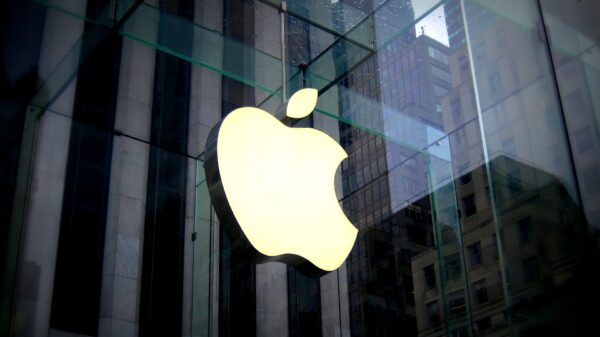Concentration of media ownership, also called media concentration or media consolidation, is a process where fewer individuals or organizations get increasingly more market share of the mass media. Research indicates that media concentration is already at an all-time high in the United States, and increasingly media concentration is a hotly debated issue in Canada.
Here’s the state of Canada’s telecommunications sector and a glimpse of where we could be going.
Outgoing CRTC head speaks his mind on media concentration
Ian Scott, the chair of the Canadian Radio-television and Telecommunications Commission (CRTC), spoke in front of the Canadian Telecom Summit (CTS) earlier this week and told the crowd that there isn’t enough competition in Canada’s wireless market to benefit Canadians.
Scott indicated the CRTC’s stance on mobile virtual network operators released in a lengthy decision in October covering terms and conditions regarding service and measures to govern relationships between regional providers and incumbents like Bell, Rogers, Telus and Sasktel.
“With those parameters set, we’re looking to the industry to take the next step — for large providers to negotiate in good faith with the smaller regional counterparts,” Scott said.
Scott hopes for more collaboration to bring Canadians more options, but he recognizes that problems arise when telecoms work together. Scott also pointed out the price and quality of internet services available to Canadians, stating that the commission needed to fix its high-speed access framework.
“We know our framework is not producing the expected results and that we need to fix it. Our objective is therefore clear,” Scott said.
However, Scott did not mention the CRTC’s reversal of a 2019 decision that indicated internet rates were too high and needed to be brought down. The CRTC reverse the decision in May 2021, citing it had made an error.
The telecommunications media concentration is an issue
The Canadian media is concentrated and controlled by a combination of private and public enterprise, and more specifically, through a handful of small companies. These include Bell (TSX:BCE), Corus (TSX:SJR.B), Rogers Communications (TSX:RCI.B), Quebecor (TSX:QBR.B) and crown-corporation, the Canadian Broadcasting Corporation (CBC).
The government has its fingers in the media pie courtesy of the Canadian Radio-television and Telecommunications Commission (CRTC). Its mandate specifically includes audiovisual media and telecom networks. Additionally, other agencies have a more specific jurisdiction like the Competition Bureau, which handles competition matters, and the Department of Canadian Heritage, which handles foreign investments in culture.
The CRTC implements the policies of the Broadcasting Act and the Telecommunications Act in Canada, but doesn’t regulate newspapers or non-audiovisual internet activity.
Corus and Rogers want to merge into one company which would reduce the amount of competition in the market even further.
Scott started in the position four years ago when he was initially elected, and his term was supposed to end in September. The government extended his position for four months while they sought his replacement.
Read more: The Mugglehead technology roundup: communication edition
Read more: Heads roll at Rogers putting Shaw merger in jeopardy
Shaw Communications sees no way forward if merger doesn’t go through
Shaw Communications made its case with the competition tribunal regarding Rogers Communications proposed $26 billion acquisition.
Trevor English, the chief financial officer for Shaw Communications, explained that the company had been struggling to compete with its largest competitor, Telus, in Western Canada since its acquisition of Wind Mobile (which is now called Freedom Mobile) in 2016. He’s stated that Shaw’s flagging performance in the wireless market has led to some investor dissatisfaction.
“This isn’t the first time that we considered consolidation within the sector,” English said. “This has been part of our process that’s been going on for many years, and we just didn’t see a viable path forward as a standalone company.”
In order for the merger to go through, Shaw and Rogers need approval from three regulators: the CRTC, Innovation, Science and Industry Canada (ISED) and the Competition Bureau. The CRTC and Industry Minister François-Philippe Champagne have given permission for the merger, but the competition commissioner has denied. The bureau pushed the matter to a competition tribunal.
As a response to antitrust concerns regarding the merger, Rogers and Shaw both agreed to sell Freedom Mobile to Videotron. The bureau started tribunal hearings earlier this month stating the sale wasn’t enough to win its approval of the merger.
This prompted Pierre Karl Péladeau, CEO of Quebecor and its Vidéotron subsidiary, to appear before the tribunal on Monday. He stated that the deal between Vidéotron and Freedom would help lower prices on wireless and internet across Canada. If the deal closes, Péladeau will try to duplicate the success his company enjoyed in Quebec in other provinces.
Péladeau would not contribute to media concentration
Also, Péladeau said he would work to disrupt the dominance of the three main companies, referring to Rogers, Bell Canada and Telus, by encouraging competition and offering lower prices.
Industry experts, however, provided a different perspective. They testified last week before the tribunal that a combination of Rogers and Shaw would mean higher prices for low-income Canadians and eliminate Canada’s fourth wireless competitor.
Lars Osberg, Dalhouse University economics professor, stated that low-income Canadians will feel most of the impact if telecom prices increase. He said that access to cell phones and connectivity is as necessary as food in today’s age. Rogers pushed back against Osberg’s claims by redirecting to the CRTC’s position to approve the deal. The regulator examined how the merger would impact consumer interests before giving the nod. These include low-income households, seniors and people with disabilities.
Rogers also referred to the CRTC 2021 review of wireless services where it detailed the expectations of telecom companies to offer a low-cost plan. Rogers does so through its Fido brand.
Additionally, Rogers referred to the company’s plan to extend its Connected for Success wireline program to Western Canada. The program includes high speed internet and bundled services at discounted prices for low-income Canadians.
Tribunal hearings into the merger will last four weeks, with arguments scheduled for mid-December. The three member panel is expected to reach a decision in the new year. Rogers and Shaw extended their merger deadline to December 31, 2022. If they don’t close the deal by then they will likely extend the deal to January 31, 2023.
Bell expands 5G and AI management deal with Centech
Bell Canada announced a three year deal with Montréal innovation centre, Centech.
The company brings its advanced network capabilities, including 5G and artificial intelligence (AI) management, to help Canadian businesses grow.
“Bell’s collaboration with Centech clearly demonstrates our desire to stay ahead of the curve in technology and innovation, as well as our continued dedication to moving cutting-edge projects forward,” said Karine Moses, Bell’s vice chair for Québec.
Centech is a nonprofit created by the ÉTS (École de technologie supérieure) in support of science-and technology based entrepreneurial projects. Specifically, the nonprofit focuses on medical technology, logistics, energy, environment and telecommunication sectors. It has supposed over 400 companies since 2018.
Bell launched Bell Ventures to serve as its corporate venture capital initiative to help companies using Bell’s networks develop. Investors include venture capital fund Boreal Ventures, which was created in partnership with Centech. Boreal supports Québec’s promising tech startups
5G could bring serious GDP benefits to 15 countries: Ericsson study
A new study commissioned by telecommunications giant Ericsson (NASDAQ:ERIC) by management consulting Analysys Mason pinpoints the potential economic, consumer and environmental benefits of 5G connectivity in 15 countries.
The broad strokes were that all 15 countries would enjoy GDP growth between 0.3 and 0.46 per cent through 2035.
The report is called the Future Value of Mobile in Emerging Markets and it examines the effects of multiple 5G deployment options would have if it were spread across consumer, industry, logistics, rural and public service clusters.
The methodology involved using national government statistics and reports, as well as Ericsson’s own network insights and mapping techniques. The stats were based on population density distribution and existing infrastructure like road and rail networks and agriculture.
Benefits include:
- 5G deployment cost will be between USD$3-8 billion per country with an additional 20-35 per cent investment to extend coverage.
- Extending coverage beyond baseline can bring significant GDP benefits from industrial adoption.
- Most coutnries will generate overall economic benefits three to seven times higher than incremental cost of extending coverage.
- Results suggest 5G mobile broadband generate consumer supply between USD$1-10 billion per country. Coverage extension boosts this by 20-30 per cent.
- The social benefits 5G brings will be best for smart factories, freight and logistics, agriculture and healthcare.
- 5G adoption can help reduce emissions through supporting digital infrastructure for agriculture, freight and logistics, as well as smart factories and construction.
The deployment option basis involves the assumptions of having a 5G rollout added to existing mobile radio network sites. Further options explore the benefits of adding Low-Band 5G coverage beyond the baseline. This delivers wider geographical coverage at the lower end of 5G capabilities. Also, mid-band 5G coverage to deliver smaller geographical coverage per site, but with higher capacity and speed. Specifically, this would serve manufacturing, automation, industry and other advanced services.
The key success factor has been identified within expanded mid-band 5G coverage. The report indicated it would deliver 80 per cent of the benefits. Additionally, benefits from Smart Industry and Smart Rural sectors account for 85-90 per cent of the benefits in each market.
Agriculture is significant in all 15 countries, making up 10 per cent of GDP in some markets. The report estimates enhanced 5G coverage in rural areas could boost of up to 1.8 per cent in GDP in agriculture. Also, 5G promotes sustainable farming, increases efficiency and reduces agricultural waste.
“With the backing of governments, regulators and policy makers, each of these 15 countries, and their citizens, stand to benefit significantly from 5G connectivity. In addition to economic benefits, 5G can also reduce climate impact, increase social inclusion, wellbeing and tackle the digital divide in areas where fixed infrastructure availability is poor,” said Andrew Lloyd, head of government and policy advocacy for Ericsson,
The study includes how governments, regulators and other policy makers can support the implementation of 5G to deliver the benefits. A few of these include treating 5G as a national infrastructure complete with a strategy and roadmap.
Follow Joseph Morton on Twitter
joseph@mugglehead.com














